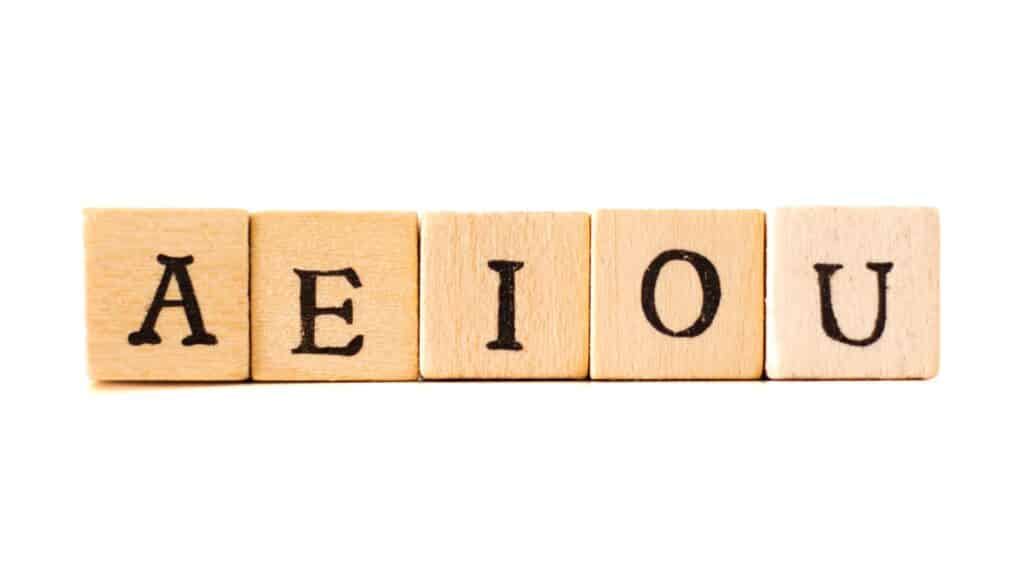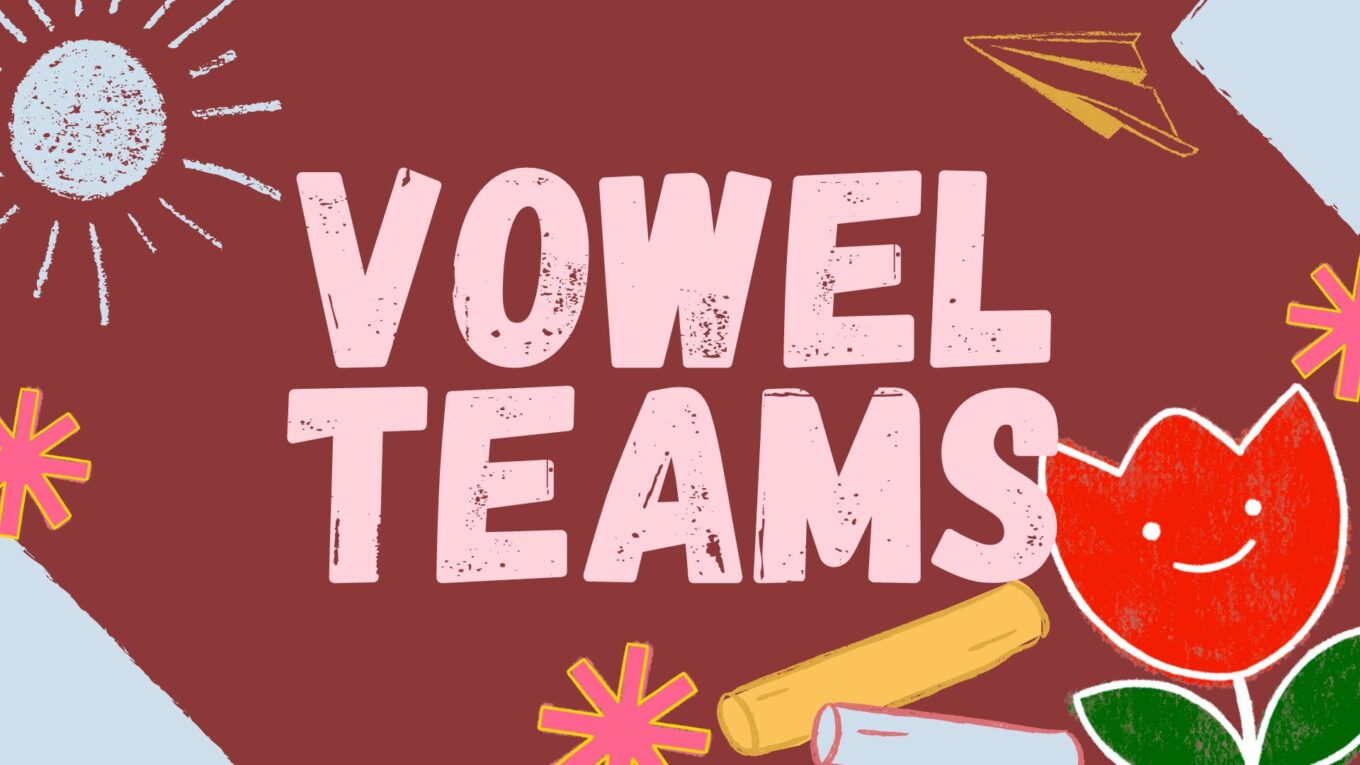We all know the challenge of teaching kids to read and spell words with tricky vowel combinations. It’s a common struggle for educators and parents alike.
Vowel teams, where two or more letters work together to make a single vowel sound, can confuse young learners. But don’t worry – we’ve got you covered.
In this post, we’ll break down the essentials of vowel teams and share effective teaching strategies to help your students master these important spelling patterns.
From understanding the basics to implementing fun, hands-on activities, we’ll guide you through everything you need about vowel teams.
Get ready to boost your students’ reading and spelling skills with our practical tips and techniques.
Understanding Vowel Teams: The Building Blocks of Reading
Vowel teams are combinations of two or more vowels that work together to produce a single sound in a word. Think of them as letter partnerships that create unique vowel sounds.
For example, in the word “seat,” the vowel team “ea” makes the long e sound. Similarly, “oa” in “boat” produces the long o sound, and “oo” in “moon” gives us the long you sound.
It’s important to note that vowel teams can create long and short vowel sounds, depending on the word. This variability is part of what makes them tricky for new readers and spellers.
Types of Vowel Teams
1. Vowel Digraphs: These are two vowels that team up to make a single long or short sound. Examples include “ai” in “sail” and “ea” in “bread.”
Examples:
- “ee” in see
- “oa” in boat
- “oo” in moon (can also be short as in the book)
- “ie” in chief (with a different sound)
- “ue” in blue
- “ew” in few
2. Diphthongs: These vowel teams create a sound where your mouth shifts position as you say it. You can hear this in words like “boil” (oi) and “house” (ou).
Examples:
- “oy” in toy
- “ow” in cow
- “au” in haul
- “aw” in claw
- “ou” in about
- “ow” in show (a different sound than in “cow”)
Split Digraphs: Sometimes, vowel teams are split by a consonant but still work together. You’ll see this in words like “cake” (a_e) and “kite” (i_e).
Examples:
- “e_e” in here
- “a_e” in plane
- “i_e” in mine
- “u_e” in cute
- “o_e” in bone
- “u_e” in cube
Remember, some vowel teams can make more than one sound. The “ea” team, for instance, sounds different in “bead” versus “head.”
The Importance of Teaching Vowel Teams

1. Tackling the Complexity of English Vowel Sounds
We use vowel teams because English has a unique problem; it has only five vowel letters but 18 vowel sounds! Vowel teams help bridge this gap, allowing us to represent all these sounds in writing.
They’re crucial for creating long and short vowel sounds, diphthongs, and even those tricky vowel combinations that make English spelling challenging.
2. Overcoming Common Challenges with Vowel Teams
Learning vowel teams can be tough for students. They often mix up similar-sounding teams, like “oa” in “boat” with “ow” in “cow.” It’s also tricky when different teams make the same sound, such as “oe” in “toe” and “ow” in “sew.”
Spelling with vowel teams is another hurdle. Kids frequently struggle to pick the right vowel team when writing, leading to errors like “bote” instead of “boat” or “seet” instead of “seat.”
By focusing on teaching vowel teams, we can help students navigate these challenges and boost their reading and spelling skills.
Effective Strategies for Teaching Vowel Teams

1. Start with Sound Recognition
When introducing vowel teams, we’ve found it’s best to begin with sound, not symbol. Have your students listen to words like “rain” or “boat” and identify the vowel sound they hear.
This auditory approach helps build a strong foundation before introducing the letters that make up the vowel team.
Once students can recognize the sound, we can then link it to the corresponding grapheme. For instance, after they’ve identified the long “a” sound in “rain,” introduce the “ai” vowel team.
2. Use Phoneme Boxes for Visual Learning
Phoneme boxes, also known as Elkonin boxes, are a great tool for breaking down words visually. They help students understand that even though vowel teams consist of two letters, they represent a single sound.
For example, draw three boxes for the word “rain”: [r] [ai] [n]
This visual representation reinforces that “ai” occupies just one sound box despite being two letters.
3. Focus on Common Patterns First
We recommend starting with simple, frequently used patterns. For instance, teach that “ai” often appears in the middle of words (rain, train), while “ay” is typically found at the end (play, stay). Understanding these patterns helps students with both reading and spelling.
4. Handle Irregular Vowel Teams Separately
Some words, like “people” or “leopard,” don’t follow common vowel team patterns. We suggest teaching these as sight words or “camera words” that students memorize rather than try to decode using typical vowel team rules.
Fun Activities to Master Vowel Teams

Word Sorting Games
Word sorts are a great way to reinforce vowel team knowledge. Have students group words based on their vowel team patterns. For example, they might sort words with “ai” (train, rain) into one group and words with “ay” (play, stay) into another.
Sentence Building with Vowel Teams
Use decodable texts to create scrambled sentences focusing on vowel teams. Students can practice rebuilding these sentences, which helps improve reading fluency while reinforcing vowel patterns.
Interactive Spelling and Dictation
Dictation exercises are a great way to practice both spelling and comprehension. Have students write sentences using vowel team words like “The train went fast.” This helps them apply their knowledge in context.
Troubleshooting Common Vowel Team Challenges
Dealing with Overlapping Sounds
Some vowel teams, like “ea,” can have multiple pronunciations (compare “bead” vs. “head”). We can help students navigate this by teaching them to recognize these variations and adjust based on context.
Utilize Visual Learning Tools
Vowel team anchor charts and vowel sound tables are helpful visual aids. Display these in your classroom so students can reference them while practicing.
A vowel sound table showing all possible teams for a specific sound can be particularly useful. It helps students memorize and apply the correct team when reading or spelling.
Conclusion
Vowel teams are a key building block in reading and spelling, but they can be tricky to master. We can help our students teach these challenges by focusing on sound recognition, using visual aids like phoneme boxes, and practicing with engaging activities.
Remember to start with common patterns and gradually introduce more complex ones. To avoid confusion, address irregular vowel teams as sight words.
As you implement these strategies, remember that every student learns differently. Be patient and celebrate small victories along the way.
The goal is to build confidence and fluency in reading and spelling words with vowel teams.
What’s your next step? Try incorporating one new vowel team activity in your next lesson. Your student’s progress might surprise you!




